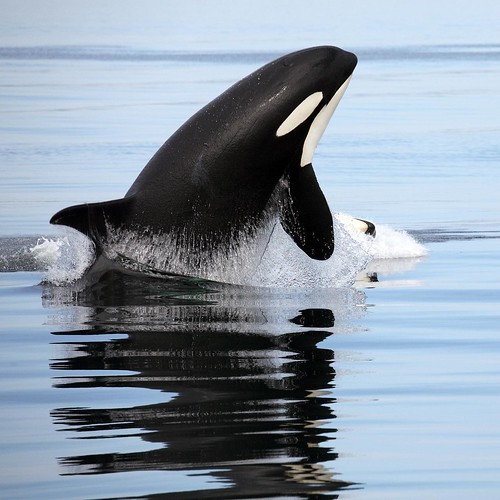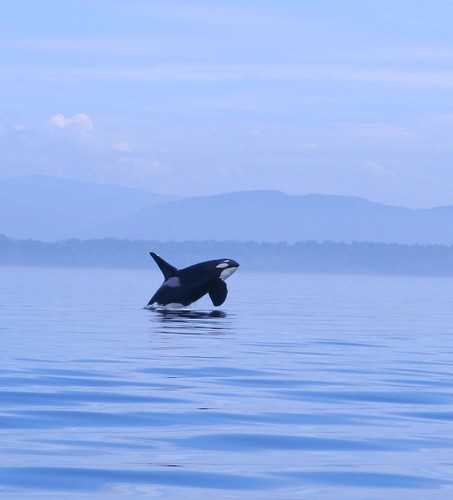It's Wednesday! Time to learn about a new animal! This week we're talking about Manny's favorite animal, the Orca! He's even more excited because we're going to be talking about him and his family for 2 weeks!
Ready for the the first week of orca facts?
 by Christopher.Michel
by Christopher.Michel Orcas, also known as killer whales, are the largest species of the dolphin family.
The term killer whales comes from the fact that orcas are known to hunt and eat other dolphins and small whales.
Orcas are found in all of the world's oceans. The only mammal that has a wider range of habitat is humans.
Orcas can reach speeds of 35 mph.
Orcas have no sense of smell.
Orcas can grow up to the length of a bus.
 by digicla
by digicla These animals have no natural predators, except for the very young which are sometimes attacked by large whales and sharks. Their only threat is humans
Their teeth are about 4-5 inches long and they have 40-50.
The orca has the 2ndheaviest brain of any marine mammal. Their brains are 4 times larger than human brains.
Killer whales eat up to 5% of their body weight each day, that's about 500 lbs of food.
 by TheGirlsNY
by TheGirlsNY Pods hunt cooperatively, in a manner reminiscent of wolves.
Orcas use echolocation, bouncing sound off objects to determine location, when they are hunting.
For more on orcas read Part 2, where we discuss the different types of pods orcas live in.
For more on orcas read Part 2, where we discuss the different types of pods orcas live in.







